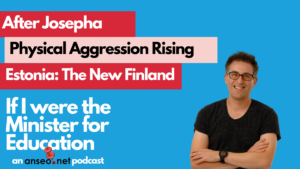 The following is a link to a simple ‘parents’ guidance’ to support early reading ( by Debbie Hepplewhite – a teacher, synthetic phonics consultant, trainer and advisor and editor of www.rrf.org and www.synthetic phonics.com) which may be of help to you.
The following is a link to a simple ‘parents’ guidance’ to support early reading ( by Debbie Hepplewhite – a teacher, synthetic phonics consultant, trainer and advisor and editor of www.rrf.org and www.synthetic phonics.com) which may be of help to you.
http://www.syntheticphonics.com/pdf%20files/parentsguidanceforreading.pdf
The following link leads to Debbie’s new online synthetic phonics programme.
.
Unit 1 is free and contains a comprehensive guidance document which contains lots of important information of interest to teachers and parents interested in synthetic phonics.
It is a large document – 34 pages- however you will find something you can use there.
You do have to register to access unit 1 but there is absolutely no commitment to purchase the other 11 units.
And the following extract from
‘ Classroom Research Findings and the Nutshell Programme’ by Dr. Bonnie Macmillan
http://www.rrf.org.uk/newsletter.php?n_ID=34)
may be of general interest and highlights the central role of phonics in teaching children how the alphabetic code works.
“This study was the first of its kind to adopt a time sampling technique in which observers closely monitored, over a period of six months, the amount of time individual pupils spent on ten different activities (Sumbler & Willows. 1996). Interestingly, it was found that out of these ten activities, only two were highly correlated with success in reading and spelling. These two were: ‘phonics’ (which included all phonics activities involving print, letter-sound correspondences, blending, segmenting, detecting sounds in words all with printed form of the word), and ‘letter formation’ (which involved talking about the shapes of letters, writing letters and words in context of learning letter-sound relationships). These were the only activities that mattered in terms of subsequent reading and spelling performance.
However, equally important was the finding that six activities made no difference whatsoever to reading and spelling success, and two activities were actually related to worse reading and spelling achievement. The six activities that made no difference were: ‘Auditory phonological awareness’ (in the absence of print), ‘sight word learning’ (learning to recognise whole words as units without sounding out), ‘reading/grammar’ (grammar or punctuation explanations, reading by children that appeared to be real reading usually with the teacher), ‘concepts of print’ (learning about reading chanting pattern books), ‘real writing’ (included any attempts to write text), ‘letter name learning’ (included only the learning of letter names, not sounds).
The two activities that resulted in worse achievement were: ‘non-literacy activities’ (such as play, drawing, colouring, crafts), and ‘oral vocabulary’ (language development, story discussions, show and tell, teacher instructions). Beyond the correlational data it was found that at the end of six months, the different emphases the synthetic and eclectic classes gave to each of these various activities added up to produce some startling differences in achievement. The synthetic phonics classes significantly outperformed the eclectic classes on 16 out of 19 reading and spelling measures, and in most cases, effect sizes were large. The results showed that the eclectic classes had not learned how the alphabetic code works and were not able to decode phonemically. The eclectic classes displayed a one standard deviation discrepancy between reading real words and decoding non-words, pointing clearly to their reliance on sight word memorization.
The most important difference between the two methods of instruction was the amount of time devoted to ‘phonics’ activities. Over the six-month period, the synthetic classes received six times as much ‘phonics’ instruction as the eclectic classes (30 hours versus 5 hours). Furthermore, while the phonics classes received only 5 ½ hours of ‘letter formation’ instruction, this was still more than the eclectic classes received (3 hours, 50 minutes) and this was enough to produce significant differences between the two groups in reading and spelling.
Overall, the results from this study suggest that rather than a particular method per se, it is the differences in time allocation to various activities that really counts. This does not mean that devoting time to certain activities is harmful, but simply that teachers must decide what is most important and at what stage if they are interested in maximizing progress.



